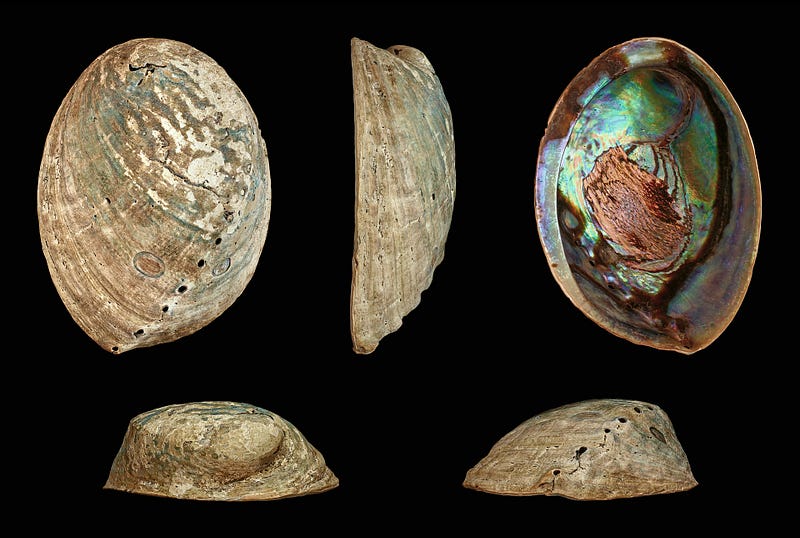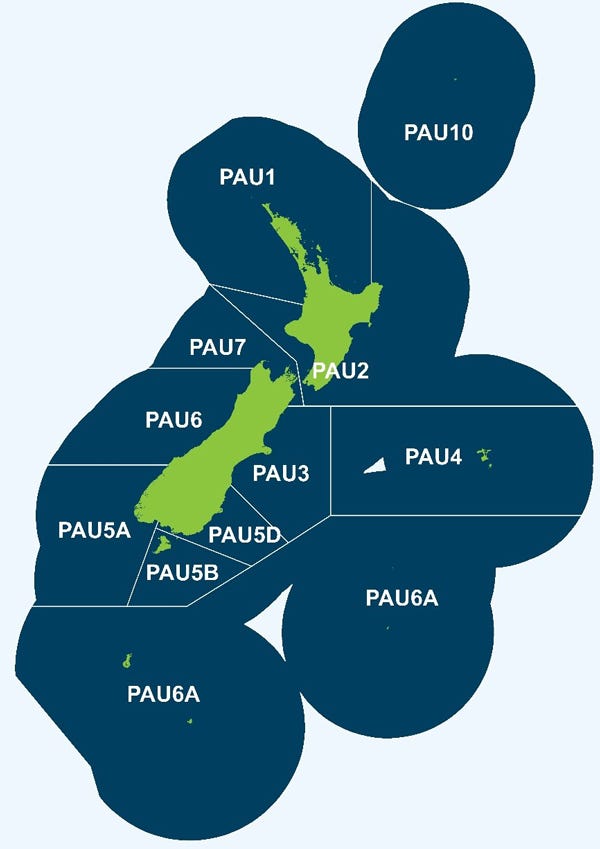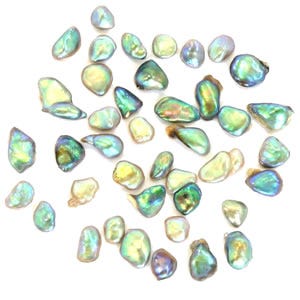Discovering Paua: Beyond New Zealand's Sheep and Cinema
Written on
Introduction to Paua
New Zealand is often associated with its sheep and the famed "Lord of the Rings" franchise, but there's a hidden gem beneath its waves: paua, a type of abalone.

Today's New York Times Spelling Bee letters:

The letters I, P, R, T, U, Y, and center A (all words must include A) prompt a curious exploration. According to Merriam-Webster...

Ah, the dictionary! It seems to overlook the legitimacy of "pauas" in the Spelling Bee context. For more intriguing insights, visit the Spelling Bee Master. What’s your favorite obscure word from today’s challenge?
Reflections on Language and Imagery
While Unsplash can be a bit tricky at times (see my previous column for context), it occasionally yields delightful surprises. Today, when I entered a word deemed "obscure," I found a fitting photo that reinforces its relevance. What better testament to a word's familiarity than a corresponding image?
But there's more to uncover! The New York Times has featured multiple articles about paua since 1964.
Epicurean Trends in New Zealand
In a 1964 article titled "EPICURISM RISES IN NEW ZEALAND," it was highlighted that the country aims to enhance its food quality rather than merely focus on quantity. Among the dishes mentioned were “toheroa and paua soups, made from shellfish.”
Paua (or p?ua) is the term used by the Māori to refer to what English speakers in the U.S. and Australia call abalone, while it's known as ormer in the UK. Although Merriam-Webster lists the plural as "pauas," some prefer to follow Māori grammar, using "pauas" for both singular and plural.
Understanding Paua
Paua refers to three species of marine gastropod molluscs found in New Zealand. To break this down, "marine" indicates these creatures thrive in oceanic waters, not freshwater. A gastropod commonly refers to snails or slugs, and molluscs belong to a significant phylum of invertebrate animals.
Essentially, pauas are ocean snails belonging to the Haliotidae family, encompassing just one genus, Haliotis, with three distinct species in New Zealand:
- Haliotis iris, known as blackfoot paua, is the largest and most commonly harvested:

- Haliotis australis, referred to as queen paua or Yellow Foot Paua:

- Haliotis virginea, also known as virgin paua:

The Ministry for Primary Industries of New Zealand provides detailed insights on these sea snails, explaining their limited habitat in shallow coastal waters and their reproductive method, where they release significant amounts of spawn carried by ocean currents.
To maintain the paua population, the ministry has divided New Zealand's waters into eleven fishery management areas.

Catch limits vary by area, based on the local paua population and health. Here are some essential guidelines for anyone considering harvesting these sea snails off New Zealand's coast.
Cultural Significance
The Māori have long recognized the value of paua, not only as a food source but also in their traditional hospitality practices, known as manaakitanga ki ngā manuhiri. There’s no update on how current fishing regulations impact their traditions.
The Pearl Connection
Beyond being a protein source, pauas are prized for their stunning shells and pearl production. In a 1977 article about the Gem and Mineral Show, the New York Times quoted Mr. Julian Fabian, who noted that paua shells reveal vibrant blues and greens once the limestone coating is removed.
However, coaxing pauas to produce pearls is no simple task. According to a 2004 article by Kim Griggs in the magazine Unlimited, the paua is a delicate creature that is easily stressed and has unique care requirements during the pearl cultivation process.
To encourage a paua to form a pearl, an insert is placed inside its shell, influencing the pearl's final shape. The paua then layers its nacre over the insert, with the resulting pearl's luster and color depending on the nacre's quality and thickness. Given the challenges involved, including the paua's sensitivity to stress, the process requires meticulous attention. After two to three years, the paua is harvested, and the pearl is extracted from its shell.
The end result is undeniably beautiful.

Pop Culture Insight
Interestingly, paua shells were used to adorn an outfit for Xena in "Xena: Warrior Princess," despite the show's Ancient Greek setting. The series was filmed in New Zealand, making local materials more accessible. This illustrates the adage: think globally, act locally.
So, if you find yourself in New Zealand, don’t hesitate to ask for paua if you're keen on sampling the local seafood or acquiring exquisite pearls—if you can, that is, given the Spelling Bee editors’ debate over the word’s validity.
To further explore the concept of "dord," check out my earlier entry on another intriguing word:
Caecal
You can get a double ligature with this word!
What exactly is a dord, you may wonder? Here's the backstory:
'Dord': A Ghost Word
One common query among lexicographers is whether a term can be sneakily included in a dictionary. Can you...
www.merriam-webster.com
Chapter 2: Cooking Paua
In this episode, Gordon Ramsay dives into the culinary world of paua, showcasing how to prepare and cook this delicacy from New Zealand.
This video demonstrates the process of catching and cooking paua (abalone) in New Zealand, highlighting local fishing practices and recipes.